It all looked so serene. So quiet. So peaceful.
Snow blanketed the fields and pastures of the Neufeld family’s farm near Fairview in Major County. Rather than the usual green wheat fields and brown, dormant pastures, the landscape was painted white with a solid layer of snowfall that descended upon much of Oklahoma in February 2021.
In the middle of what seemed like a still, wintry wonderland, Scott Neufeld – like countless other Oklahoma farmers and ranchers – was battling the frigid temperatures and the blanket of snow as his family raced to take care of their cattle in the middle of calving season.
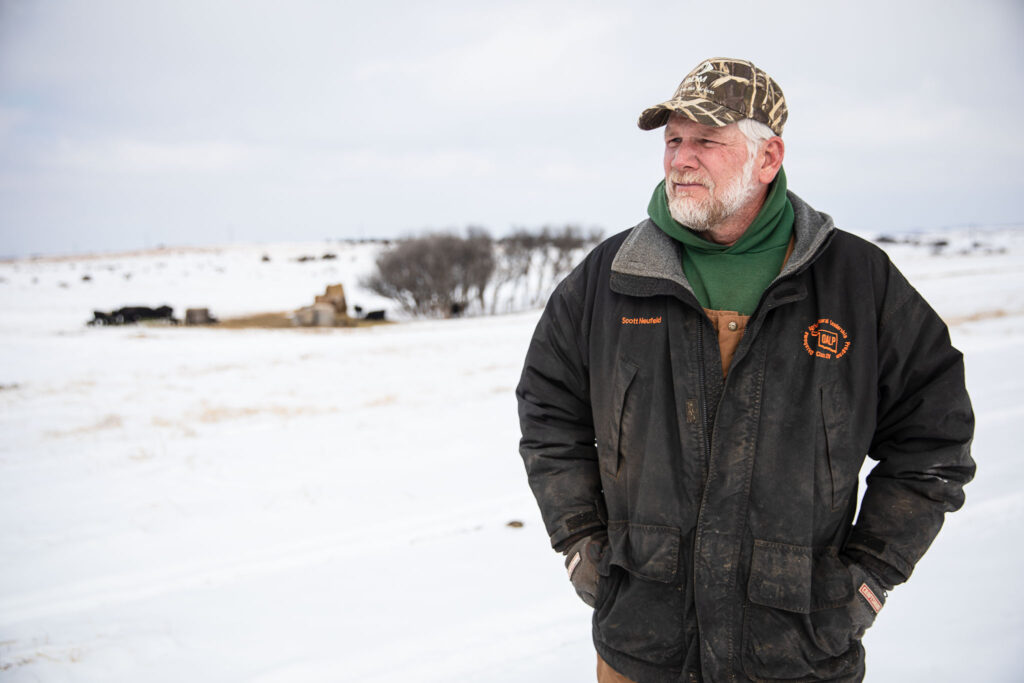
The temperatures – which dipped below zero with negative wind chills in Fairview – coupled with the snowfall meant normal chores took hours longer than usual to finish. With cattle eating more hay due to the low temperatures accompanied by water troughs that kept freezing, the Neufeld family had no chance to slow down.
Each day during the deep freeze, the family’s work crew – which included Scott, his son, Caleb, a hired hand and Scott’s father in-law – divvied up tasks to ensure animals were cared for. Splitting up in feed trucks and tractors, the team scattered across the family’s farm as they made two rounds daily, checking and feeding their herd.
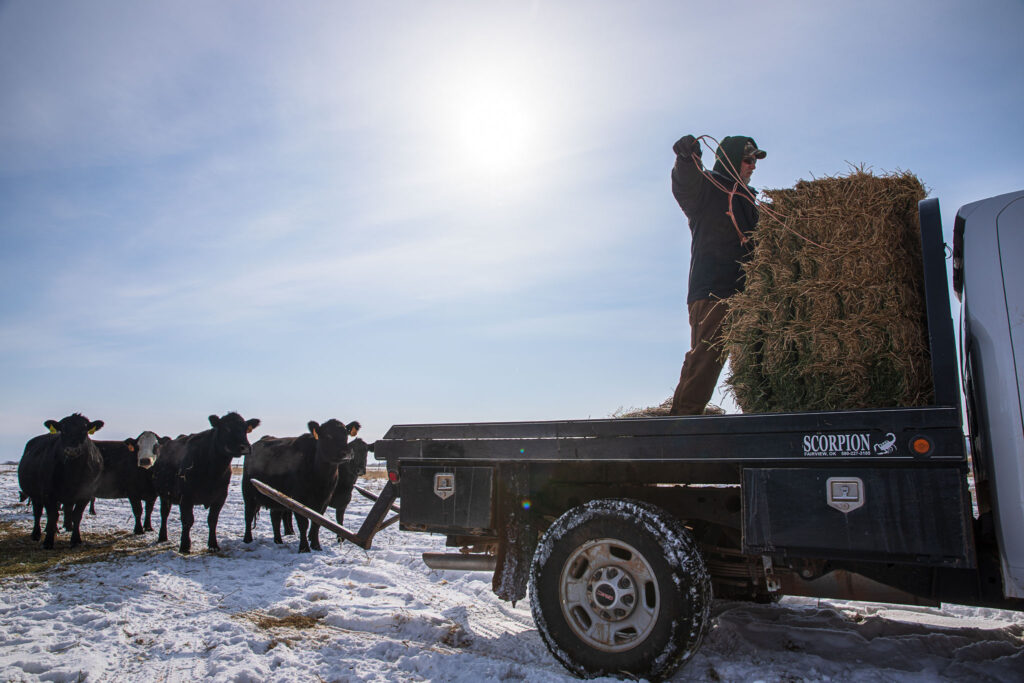
The well-worn feed truck paths through the snow and the growing piles of ice next to each watering trough told the story of the hours of extra work and dedication the Neufeld family poured into their herd for more than a week.
“The last week or 10 days obviously has been a historic event for a lot of people with a 100-year record being broken with temperatures,” Scott said. “We’ve been cold before, but not for a week or 10 days, going on two weeks here, below freezing. It’s obviously historic.”
Oklahoma ranchers are accustomed to caring for cattle in freezing temperatures, but not for days on end without relief. Scott did his best to prepare by moving cattle to areas with barns or other buildings for protection, stacking hay bales in pastures to create wind breaks, and spreading hay for bedding and insulation from the impending frigid conditions.
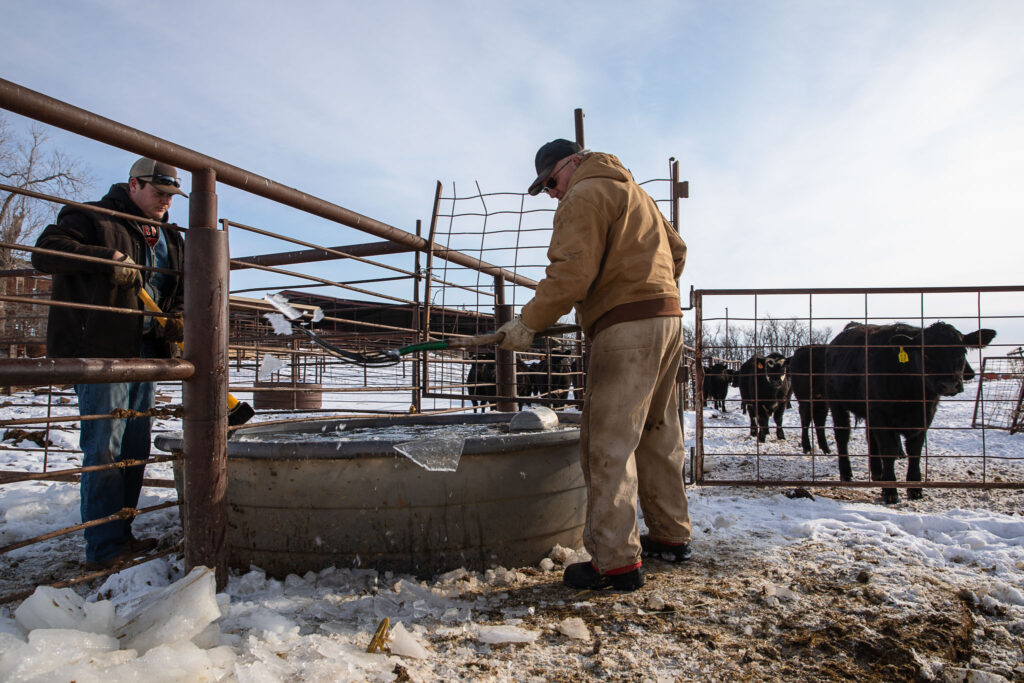
As temperatures plummeted and winter precipitation fell, Scott and Caleb spent nearly every waking hour working to break ice in water tanks and ponds, provide extra feed, and care for new calves.
Though cattle are equipped to survive in extreme winter weather with plenty of feed and water, the dangerous temperatures rapidly become life-threatening for newborn calves. Scott said average temperatures in a typical Oklahoma calving season look like highs in the 50s and lows in the mid-30s. But this year, more than half of his calf crop came into the world in single-digit temperatures with below-zero wind chills.
“It’s been a challenge, not going to lie,” Scott said. “Normally when we’re calving, we check them in the morning and then in the evening to make sure everything is OK. But when it’s this cold, you’re checking them very regularly.”
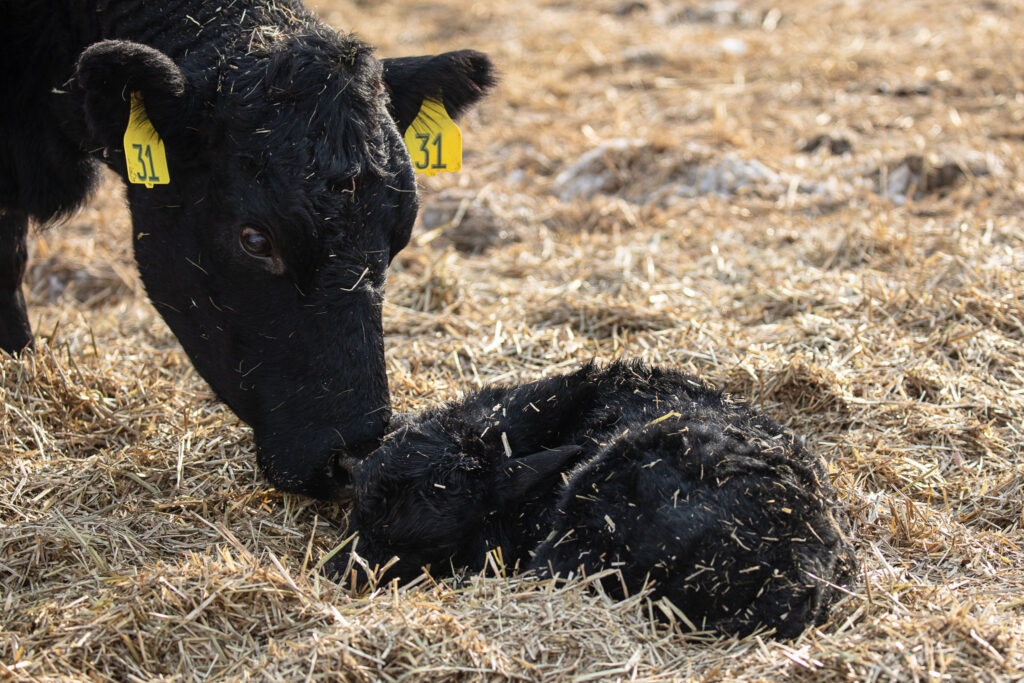
In each pasture, the Neufeld family slowly circled the piles of bedding they laid out in advance, searching for newborn calves amongst the growing herd.
“It’s unfortunate,” Scott said of calving during the cold snap. “You usually look forward to a new calf, but with weather like this you kind of hope they hold off.”
Days on end of battling the harsh conditions quickly took a toll on the ranchers, both physically and mentally.
“When you go out in the morning and you find two or three baby calves that didn’t make it, or you had one in the warming house that just was too cold and couldn’t survive, those are discouraging days,” he said. “But then, you have other days where you see three or four that were born that you know are doing fine, mom took care of them, it’s encouraging.”
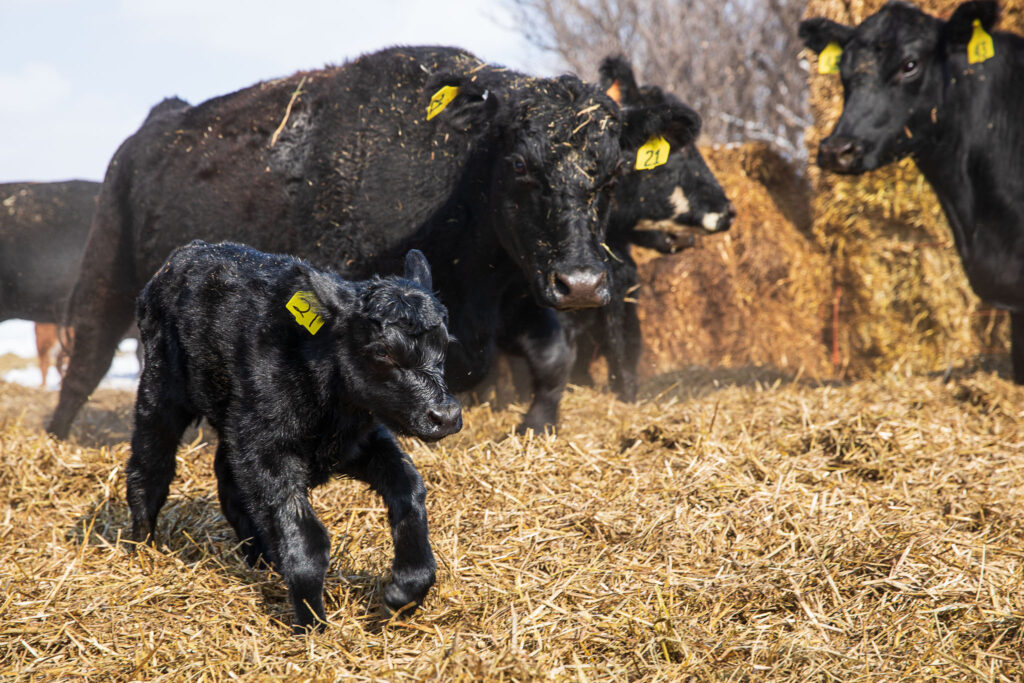
After days of loss and discouragement, Scott said his faith helped him endure.
“You have to have faith during these times that you’re doing all you can, and that the Lord is going to protect you and sustain you and get you through it,” he said. “Without faith, you kind of scratch your head and say, ‘What are we doing all this for?’”
The Major County farmer and rancher still finds hope in small things, like the sight of healthy, energetic calves in a cold, snow-covered pasture.
“This is a blessing, seeing the live one sitting there,” he said. “That’s encouragement. That’s a sign of God’s faithfulness, that even though it can be so bad that there’s still life. There’s still hope.”
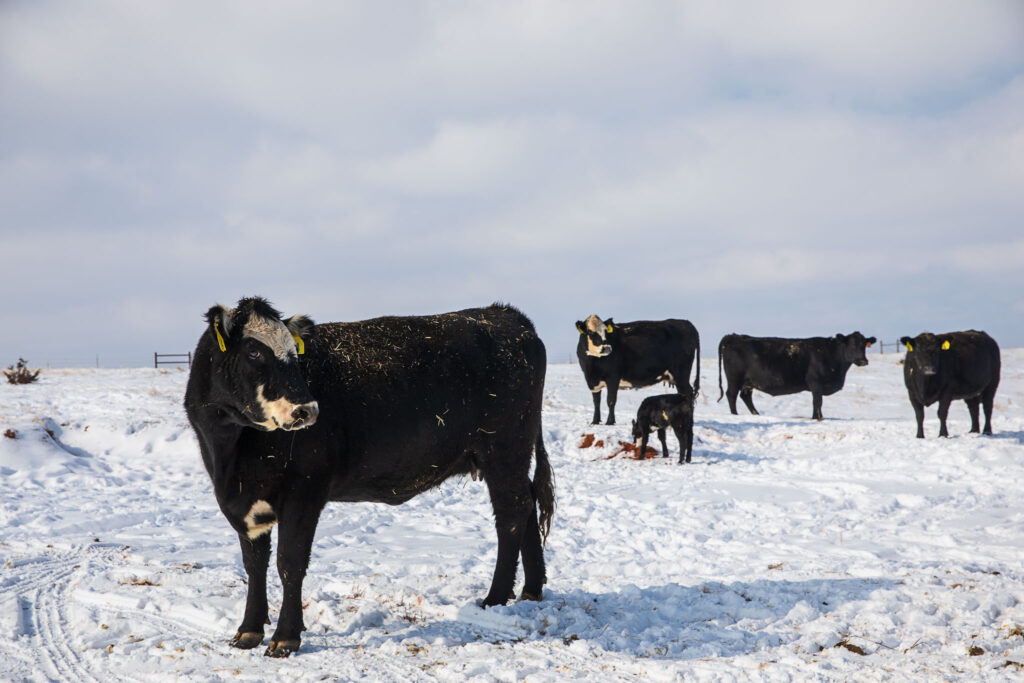
As the temperatures – and the Neufeld family’s spirits – started to climb as February’s third week progressed, Scott was unwavering in his determination to uphold his family’s farming legacy.
“It’s a calling,” Scott said. “I think if you ask most producers who are out doing what they’re doing, they don’t do it for the glamour or for the money. It’s because we care. We want to be good stewards of what we’ve been given and pass it to the next generation with the same care that we received it.”
